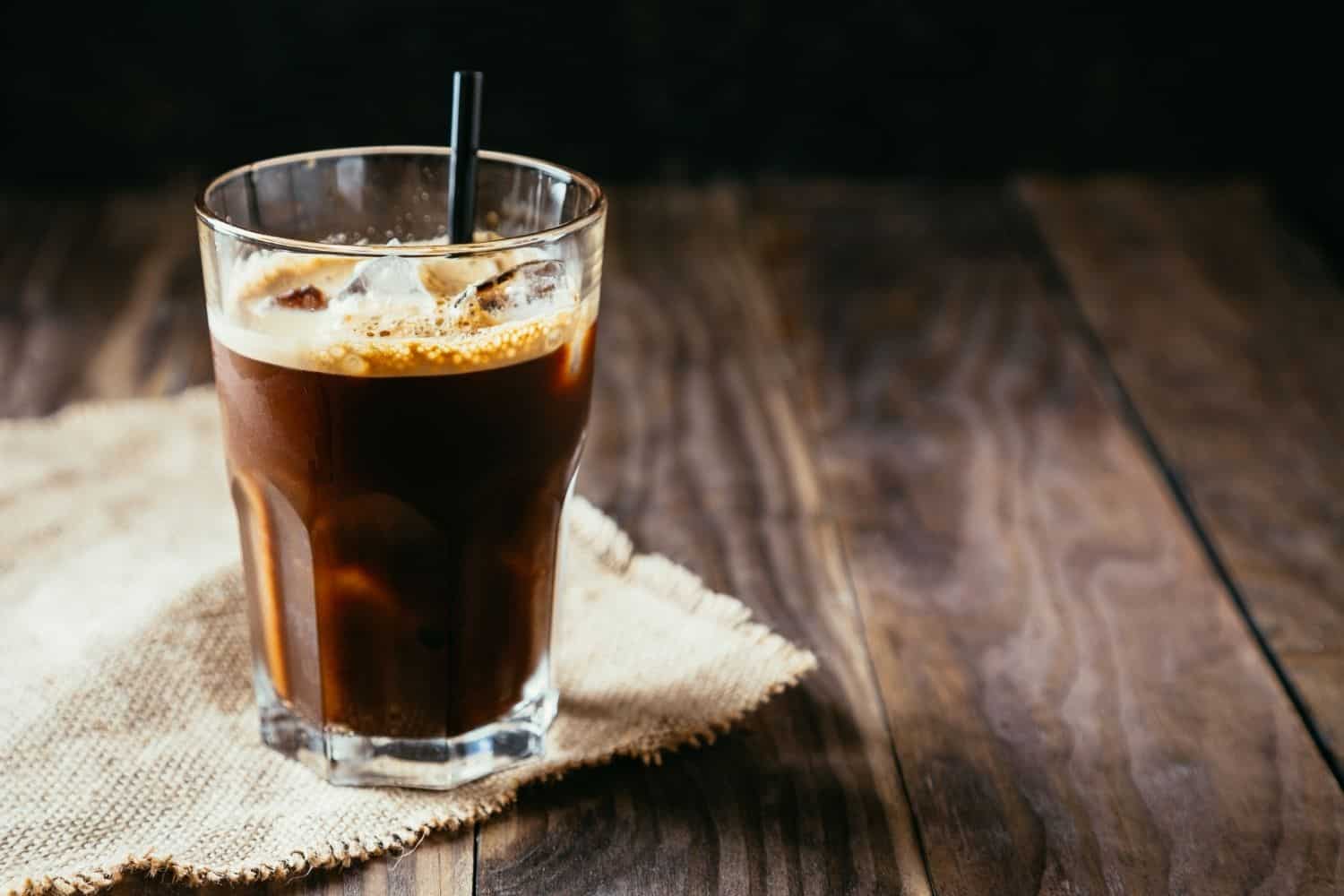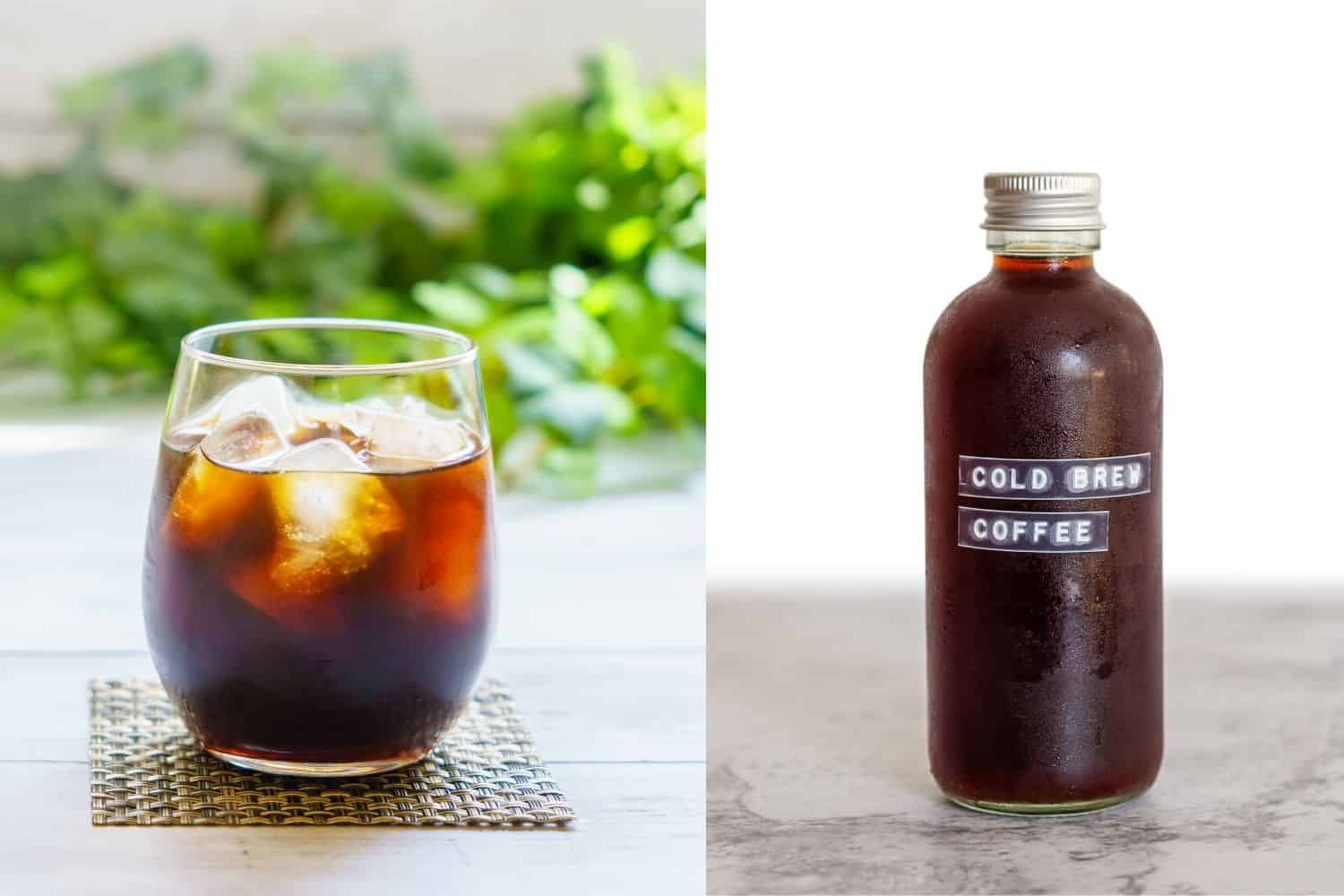The options for relaxing with a cup of coffee during hot weather are endless.
Whether you need cold coffee to energize or simply to cool down in the summer, you can be sure to find the perfect cup of coffee.
But when it comes to making coffee over ice, there are two main options: cold brew and iced coffee.
Coffee drinkers have debated cold brew vs iced coffee for years, and it doesn’t appear to be going away anytime soon.
And you are probably curious too! Just what is the difference between cold brew and iced coffee? It’s less about what’s in the cup and more about how it is prepared and served.
Although both are tasty types of summer beverages, they are not the same, nor do they have the same benefits.
Cold-brew is – put simply – coffee that has been steeped for a long time. Iced coffee goes through that brewing process, but with an extra step – the coffee is chilled after it is brewed.
With that said, what are the differences between cold brew and iced coffee? Here’s a closer look at what sets these types of drinks apart.
What is Iced Coffee?

Simply put, iced coffee is brewed and chilled coffee grounds.
The recipe is as easy as it sounds: brewed coffee with ice. Making iced coffee in the kitchen is a straightforward process: you simply brew coffee, as usual, let it cool, and pour it over ice. Also, the ingredients required are very minimal.
Even though you can quickly fix a cup of coffee with this method, it has a significant drawback. The melting ice when serving dilutes the drink, especially during summer days.
But the good news is that you can prevent the ice from diluting the coffee drink in two ways.
Either by;
- Doubling the amount of freshly ground coffee you put in your coffee maker so that you increase the strength of the coffee brew or,
- Make coffee ice cubes to double the strength of the coffee flavor. Prepare your coffee, as usual, cool it, pour it into an ice cube tray, and freeze for your next iced cup of coffee.
The main point is to make it double-strength to minimize watering down by melting ice.
Iced coffee can be prepared in dozens of different ways, all with specific flavors and attributes. Some types of iced coffee you can order in a coffee shop include drip, Iced Americano, and Pour over style.
- Drip: Whenever you order an iced coffee, this is the most likely drink that you will be served. Dripping entails chilling brewed coffee in the fridge or pouring it directly over ice.
- Iced Americano: In this process, a cold shot of coffee is served over ice and topped with water for a beautiful cup with extra body and flavor. The water temperature matters a lot in this process. Preferable, top the coffee with cold water for the best results.
- Pour-over: It is popular in Japan and is mainly found in specialty coffee shops. In this method, ice cubes are placed at the bottom of a Chemex. So, when hot water is poured over the coffee grounds at the top, the brewed beverage drips directly onto the ice. This method is particularly beneficial for preserving the delicate, unique flavors of specialty coffee beans.
You can easily prepare an iced coffee drink at home, but in case you have little time, you can buy pre-made options at your local grocery store or coffeehouse.
What is Cold Brewed Coffee?

In contrast to simple iced coffee, making cold brew coffee is a bit complex. Coffee is extracted in a cold process, resulting in a delicious brew due to the time it takes to brew it.
The brew is made by soaking coffee grounds in cold water for at least twelve hours.
Generally, coffee with a longer soaking time produces more robust flavors—ice pairs well with cold-brew coffee due to its strength.
Ground coffee is immersed in water for up to 24 hours in the cold-brew process, then filtered to remove any remaining solid beans.
The procedure results in an amber-colored liquid coffee, which is strong in flavor and can be diluted with additional water or milk then served over ice.
Most cold brews involve a full-immersion method where water and coffee grounds are placed together in the same vessel.
Another alternative for making cold brew is to prepare it from a cold brew concentrate. In this case, you dilute cold brew coffee concentrate with cold water or poured over ice cubes. Room temperature water is not ideal for this process since you need to take the brew while cold. Thus, store some water in the refrigerator to make it cold enough to dilute cold brew concentrate.
Cold brewing can be done in pretty much any container that holds liquid. It does not need to be a particular container dedicated to preparing the cold brew. A pot, a bucket, pitcher, or even a mason jar can serve the purpose. You can also make cold brew with other methods such as a French press or cold drip coffee brewing.
Cold-brew filters are often made of paper. However, cheesecloth, felt, nylon or metal mesh are common coffee filter choices.
Most coffee shops prepare the brew using the cold extraction process despite being expensive and tedious.
Cold brewing is a slow process that produces weaker beverages compared to hot brewed coffee. And the best way to avoid a weak, watery brew is to use a higher ratio of coffee to water, such as 1-to-1.
Iced coffee and cold brew start with ground coffee beans, a preferred brewing method, and a filtering system. However, there’re differences in the preparation time, flavor profiles, and taste.
The Thin Line

Arguably the most popular brewing method in coffee shops, you might wonder the difference between cold brew and iced coffee.
For some, however, it is a thin line between them. And sometimes, some coffee consumers are never sure which brew they are getting into their cups.
But in reality, each brew has its own history and offers its own unique flavor and taste.
So what is the difference between cold brew coffee and iced coffee? Is there even a difference between the two?
You are right; there is.
For instance, preparing cold brew coffee takes longer than iced coffee drinks. It takes at least 12 hours to prepare it, while iced coffee preparation is fast, easy, and cheap, often ready in under 10 minutes.
Another major difference is that cold brewing coffee produces a low acidic concentrate, which can be drunk over ice or mixed with milk for a smooth and creamy drink.
On the other hand, iced coffee is more acidic and can cause damage to sensitive teeth and stomach.
Also, cold brew is generally less acidic and has less bitterness than iced coffee because it extracts the oils, sugars, and caffeine through time rather than heat.
Cold brew and iced coffees are very different from one another. They appeal to different types of drinkers.
An iced coffee lover is often looking for a quick drink during their busy hot days. And cold brew drinkers are looking for something to sip on and keep them going throughout the day. Making iced coffee involves brewing hot java, leaving it cool, and then serving it over ice.
In contrast, cold brew is made without heat. It is one of the oldest ways of making coffee.
During cold brewing, ground coffee is steeped for several hours in cold water, eliminating much of the acidity in drip coffees. This process produces naturally sweet and smooth coffee drinks suitable for people with a sensitive stomach.
There is, however, a slight difference in the caffeine levels between the two.
Cold coffee brewing produces more caffeine content than iced coffee because the grounds are in direct contact with water for a longer period. For instance, a cup of iced coffee drink includes 165 mg of caffeine, while a cup of cold brew contains 205 mg.
Whether you prepare your favorite coffee drink at home or take it at your local coffee shop, cold coffee drinks and iced coffee, including ready-to-drink iced coffee cost differently.
Overall, cold brew coffee tends to have a higher price tag than iced coffee because of the higher ratio of coffee grounds to water and the lengthy preparation process.
Cold brewing can muffle the bean’s flavor. Thus, cold brew may lack some of the complexity of hot brewed coffee. If you are a coffee connoisseur, brewing hot coffee will enhance the flavor notes and aromas of coffee.
Conclusion
The difference between cold coffee and iced coffee is one of the most frequently asked questions on the internet.
Simply put, they’re two distinct ways of brewing coffee with different results. They’re both part of the third wave of coffee, yet they have unique tastes.
Both refer to brewed coffee served at a cool temperature using different brewing processes.
Cold-brew has a stronger taste than hot coffee. Also, cold brewing coffee is a more challenging coffee brewing method than making hot coffee.
Iced coffee is ready within a few minutes, but cold brew takes longer, usually a day or two.
Even if you prefer your coffee drink with or without cream and sugar or your preference is black coffee, understanding the difference between iced coffee and cold brew coffee may make picking a glass of joe a little easier.
Your choice depends on what your preferences are. So, when it’s hot, you may choose a smoother taste and a less bitter taste than cold brew. If you have a sensitive stomach, you can benefit from the lower acidity in cold brew.
Alternatively, iced coffee is an excellent option if you don’t want to wait for a longer brewing time.
Furthermore, iced coffee has less caffeine, which could be beneficial if you get overly jittery.
If you have ever wondered whether iced coffee is cold brew or whether cold brew is iced coffee, you now know they’re two different coffee brews.
Related Articles
How to Make Cold Brew Coffee in a French Press?